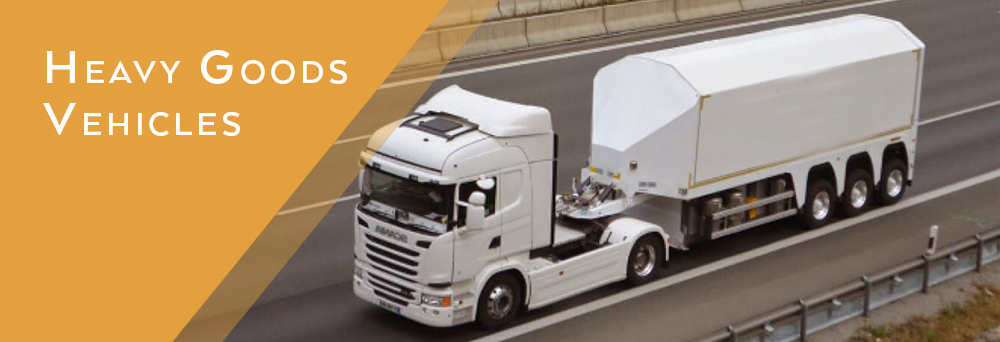February 2022
Revising the weight policy of Heavy Goods Vehicles
Improvements needed in the Directive 96/53/EC
Directive 96/53/EC[1] specifies the maximum dimensions and weights of national and international heavy goods vehicles (HGV) circulating between Member States. It provides for minimum harmonisation and requests Member States to allow vehicles with a weight of up to 40 tonnes to cross their border and circulate in their territory[2]. Member States remain free to raise the maximum weights allowed on roads within their national borders[3].
While the harmonisation efforts are welcomed to realize the internal market in practice, the minimum harmonisation approach is insufficient as it gives rise to different limitations for the same HGV as it travels Europe and different rules between what is allowed to cross national borders and to drive within the same country.
In the flat glass sector, these differences in national legislations generate many logistics problems considering the heavy weight of goods transported[4], the unique type of vehicle and equipment used to that end[5], and the cross-border nature of most journeys. These differences prevent an optimisation of transport flows, in turn generating more trucks on the road and more CO2 emissions, which could be otherwise easily avoided.
Against this background, Glass for Europe calls on policy-makers to review Directive 96/53/EC and to:
Make the maximum weight to enter a Member State identical to the maximum weight allowed on its national territory.
Allow a maximum weight of vehicles of at least 44 tonnes for the transportation of flat glass in order to optimize logistics and thus contribute to a reduction of GHG emissions generated by this activity.
1. Coherent border-crossing restrictions
Glass for Europe considers that transiting HGVs that are heavier than 40 tonnes but within the weight limit accepted by the bordering Member States the truck is transiting, should be able to cross the border in the same way that 40 tonnes vehicles would do. If two neighbouring Member States similarly rose the maximum weight on their national territory, it can be considered that they both possess adequate infrastructure for HGVs heavier than 40 tonnes and that both consider the safety/environmental impacts of such vehicles acceptable.
As long as this rule is absent from the directive, legal uncertainties will remain for operators crossing a border between countries in the abovementioned situation. Currently, a Member State can raise the maximum weight of HGV on its national territory but still refuses to let HGV of such weight pass their border[6]. This situation is detrimental to the transport of flat glass sheets throughout Europe. A vehicle load cannot be optimised for the sole crossing of the border, while all countries of transit would accept higher loads.
Alongside organizational burdens, such discrepancies increase the transport costs and contribute to higher GHG emissions from glass transportation. Glass for Europe thus suggests amending Directive 96/53/EC to ensure that the maximum weight to enter a Member State is identical to the maximum weight allowed on this same Member States’ territory.
2. Generalizing maximum weight to 44 tonnes for vehicles with 5 axles (or more)
Case studies and forecasts assessing the impacts of increasing the maximum weight of HGV have shown that such a measure would overall be economically and ecologically beneficial. In Spain, it has been evaluated that generalizing the use of longer and heavier vehicles[7] (LHVs) could diminish CO2 emissions by 2 million tonnes and generate a global benefit of €3500 million over 15 years[8]. In the UK, it was estimated that raising the maximum weight of HGV from 40 to 44 tonnes in February 2001 has resulted in cutting CO2 emissions by 294’300 tonnes between 2001 and 2003[9].
The flat glass industry is constantly trying to optimize the transportation of glass sheets to decrease costs and lower its CO2 emissions. Alternative transport modes are used whenever relevant, for example, rail or river transport, yet road transport is likely to stay the main mode of transport of glass sheets within Europe. Raising the maximum weight allowed for the transport of flat glass sheets would offer an opportunity to reduce GHG emissions alongside reducing transportation costs. A difference of 4 tonnes is non-negligible for the flat glass industry, considering that glass has a high volumetric mass density. As an example, the addition of 4 standard glass plates of 19 mm thickness each represents a weight of about 3.7 tonnes and amounts to adding only 7.6 cm of thickness over the entire length and height of the trailer. This is something that can be done without changing the properties and configurations of the equipment and vehicles currently used.
Glass for Europe calls for a weight of 44 tonnes to be allowed for the transportation of flat glass sheets. This can be done by way of amending the Directive 96/53/EC to either increase the maximum weight of all 5 axles (and more) HGV to at least 44 tonnes.
Since the transportation of flat glass sheets by road is performed on specialized vehicles which cannot be used to conveniently transport any other type of goods, the weight limit could otherwise be raised for this activity specifically without creating control or verification difficulties for authorities.
[1] Council Directive 96/53/EC of 25 July 1996 laying down for certain road vehicles circulating within the Community the maximum authorized dimensions in national and international traffic and the maximum authorized weights in international traffic (OJ L 235, 17.9.1996, p. 59)(https://eur-lex.europa.eu/eli/dir/1996/53/oj/eng)
[2] Two specific cases can exceed this limit. First, the transport of containers or swap bodies in an intermodal transport operation, for which the maximum weight is fixed at 42 tonnes or 44 tonnes depending on the vehicle’s configuration. Second, in case fuel or zero-emission vehicles are used, the maximum allowable weights may be increased up to 1 or 2 tonnes depending on the vehicle’s configuration.
[3] Some countries currently set higher maximum HGV weight within their territory, e.g., Belgium (44 tonnes), Czechia (48 tonnes) or the Netherlands (50 tonnes).
[4] Raw flat glass plates sent to glassmaker’s customers have a standard dimension of 6000 mm x 3210 mm (or 3210 mm x 2250 mm), and thicknesses going from 2 to 25 mm. This means weight going from 0,1 to 1,2 tonnes.
[5] Glass “inloaders” are a special kind of semi-trailer used exclusively to transport glass plates. They do not have continuous axles between the wheels and are equipped with independent wheel suspension. This feature offers inner semi-trailer dimensions which are adapted for standard glass plates (6000 mm x 3210 mm), which would not be possible in a standard semi-trailer.
[6] For instance, from 2022, it is not anymore allowed for 44 tonnes road trains to enter France while it is allowed to drive with such vehicles on the French territory (see: Décret n° 2021-1006 du 29 juillet 2021 relatif aux poids et dimensions des véhicules terrestres à moteur et modifiant le code de la route, https://www.legifrance.gouv.fr/jorf/id/JORFTEXT000043877263). Thus, a 44 tonnes road train who would come from Belgium (where such configuration is also allowed) could circulate in both countries but would be forbidden to cross the border from Belgium to France.
[7] These are vehicles weighing up to 60 tonnes and with a length up to 25.5m.
[8] Alejandro Ortega et al. “Are longer and heavier vehicles (LHVs) beneficial for society? A cost benefit analysis to evaluate their potential implementation in Spain.” Transport reviews 34, no. 2 (2014): 150-168.
For an overview of the possibilities to decrease the CO2 emissions per tonnes of transported goods when using heavier vehicles, see: K.P. Glaeser and A. Ritzinger. “Comparison of the performance of heavy vehicles results of the OECD study:‘moving freight with better trucks’.” Procedia-Social and Behavioral Sciences 48 (2012): 106-120.
[9] It can be added that there was also a reduction of 1919 tonnes of NOx and 68.4 tonnes of PM10 during the same period. See: Alan C. McKinnon. “The economic and environmental benefits of increasing maximum truck weight: the British experience.” Transportation Research Part D: Transport and Environment 10, no. 1 (2005): 77-95.




